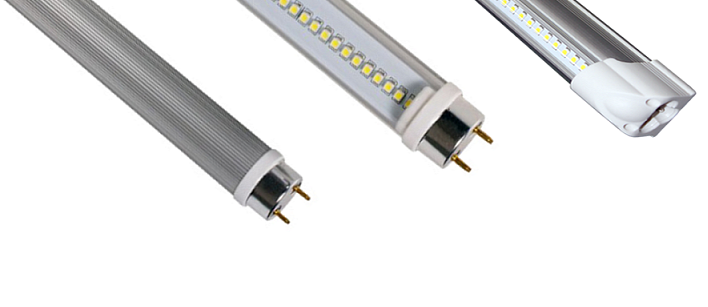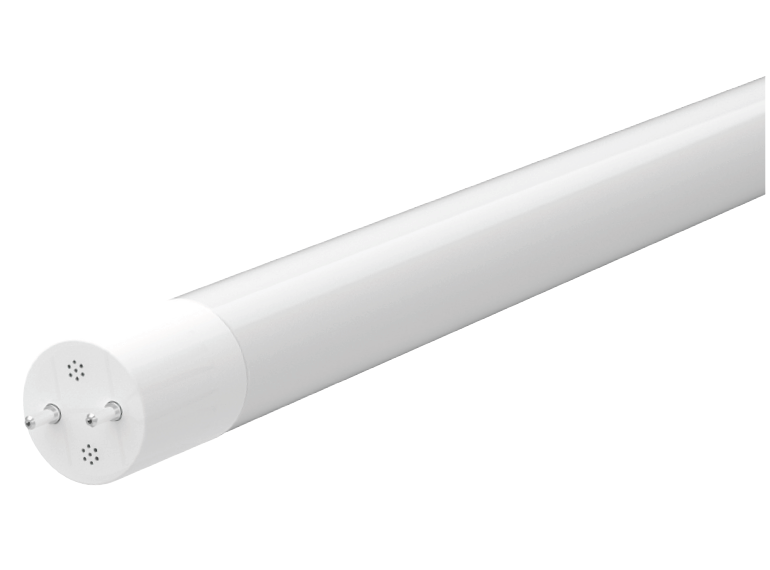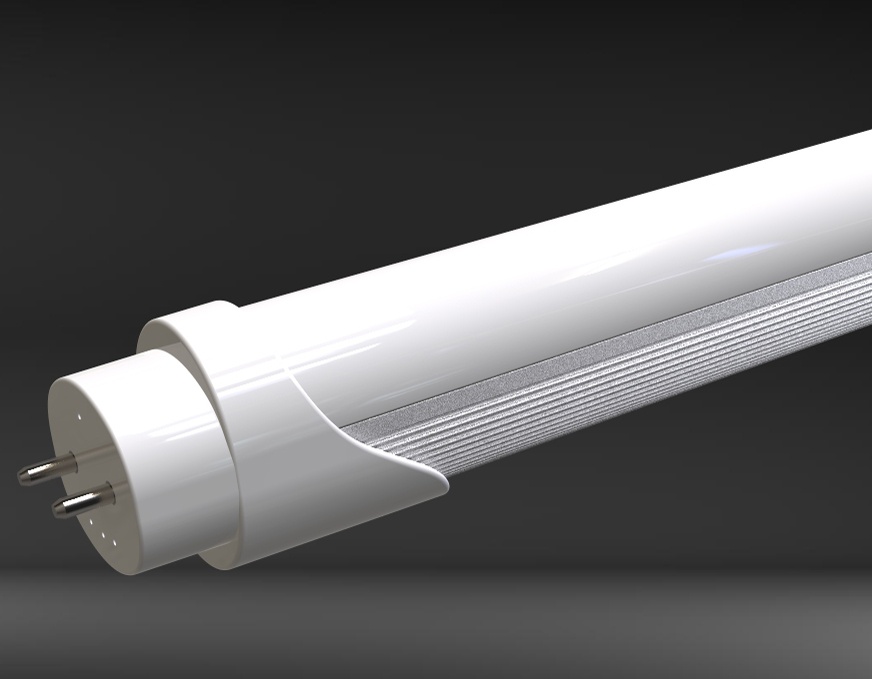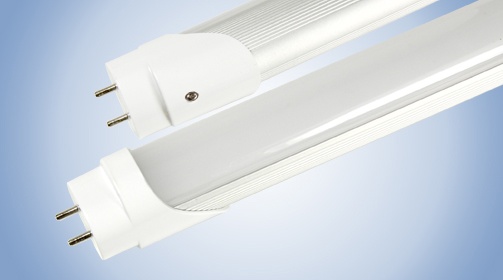
CONFUSED ABOUT DIFFERENT TYPES OF LINEAR LED TUBES?
We break down the 3 most common types of T8 and T5 LED tubes used in LED lighting retrofit projects and their various pros and cons.
TYPE A LINEAR LED TUBES
Does your facility, such as a gymnasium, commercial or industrial building, have high ceilings?
 Type A lamps are a good solution in many applications because of the increased ability to control the light via ballast factor.This is currently the only LED T8 lamp system that is capable of matching a T8 system operating on a high ballast factor.
Type A lamps are a good solution in many applications because of the increased ability to control the light via ballast factor.This is currently the only LED T8 lamp system that is capable of matching a T8 system operating on a high ballast factor.
Type A lamps are a fluorescent ballast compatible lamp with exceptions. These exceptions are expansive, in fact almost every manufacturer suggests consulting their list of compatibilities before installing LED T8 tubes. We have found that there are even scenarios where the LED lamp product is not compatible with ballasts from the same manufacturer.
Additional benefits of Type A lamps are that they come in different wattages and beam angles, and lumen output for this type can be controlled by the existing ballast: Low Power (LP), Normal Power (NP), and High Power (HP). Most often, these lamps are installed as a simple “relamp” project, but it is important to consider the age of your ballasts when choosing this type. If you intend to change ballasts the week after you install these LED lamps, that may undermine the goals and objectives of your project. Whether or not type A is going to be the best solution for your project depends greatly on your maintenance story.
TYPE B LINEAR LED TUBES
Type B lamps are seeing a lot of changes in the industry due to their many risks.
 We are still seeing issues with the direct wire single-ended lamps, which require the ballast to be removed and the socket wired directly to line voltage. Risks include the possibility of lamp failure, sparks and even fires. These single-ended lamps may have been previously chosen to reduce maintenance time, but they pose such a large safety risk that the industry is shifting towards the double-ended lamp.
We are still seeing issues with the direct wire single-ended lamps, which require the ballast to be removed and the socket wired directly to line voltage. Risks include the possibility of lamp failure, sparks and even fires. These single-ended lamps may have been previously chosen to reduce maintenance time, but they pose such a large safety risk that the industry is shifting towards the double-ended lamp.
Double-ended Type B lamps mitigate many of the safety concerns because there is no longer a way for the electrical current to travel across the lampholder. This includes a situation where you install a fluorescent lamp . You also no longer have to install an unshunted socket due to the dual-end nature of the new lamps.
Some of the main downfalls of the new version of these lamps are that they are very limited in lumen output options (generally two light levels) and that there currently are no known lamps on the market that can reach high output light levels required in the applications mentioned above.
Another common downfall of Type B LED lamps is the “flicker” factor. This is an issue that used to be prevalent with T12 and was basically eliminated by T8 solutions. It has now come back with the Type B tubes, but it is not prevalent in Type A or Type C solutions. There are a couple of manufacturers that have come out with a flicker-free type B solution, but options are limited. The flicker is unnoticeable to many, but with some segments of the population it can be very debilitating (causing headaches, nausea, etc).
TYPE C LINEAR LED TUBES
Type C’s are really the only “true LED system” among the T8 lamp options.
 Type C Lamps are an LED lamp with a fixture mounted driver, with drivers now available with three different standard outputs as well as programmable for more/less output depending on required light levels. The Type C lamp is similar to an LED fixture in that you have a light engine and a separate driver.
Type C Lamps are an LED lamp with a fixture mounted driver, with drivers now available with three different standard outputs as well as programmable for more/less output depending on required light levels. The Type C lamp is similar to an LED fixture in that you have a light engine and a separate driver.
Type C’s typically offer the longest life, and dimming capability that the others do not. The reason they’re not chosen as often is due to their higher price point. Total cost of owning a lighting system should be evaluated when considering whether these are your best investment. The type C lamp has just recently achieved controllability using different Mili-amp Drivers. The drivers are more expensive, but in some instances the will achieve a higher lamp life rating 60,000 versus 50,000 hours.
Type C lamps have their benefits, but as with Type B, most of the market offerings do not capture the high lumen output category. The other issue we have discovered with Type C is that virtually none of the systems are cross-compatible across manufacturers. This means that you could potentially be stuck with the manufacturer and product line that they have installed in the facility. You would most likely not be able to find a lamp or a driver from a different manufacturer that works with your existing system down the road if that system is discontinued, or the manufacturer goes out of business, in many cases resulting in a completely new system investment.
While linear LED lamps are popular now, that does not mean that it is the only option, or always the best option when upgrading to LED. You should consult a lighting professional to ensure that you are aware of all of the pros and cons for all options available to ensure you are meeting all of your project goals.